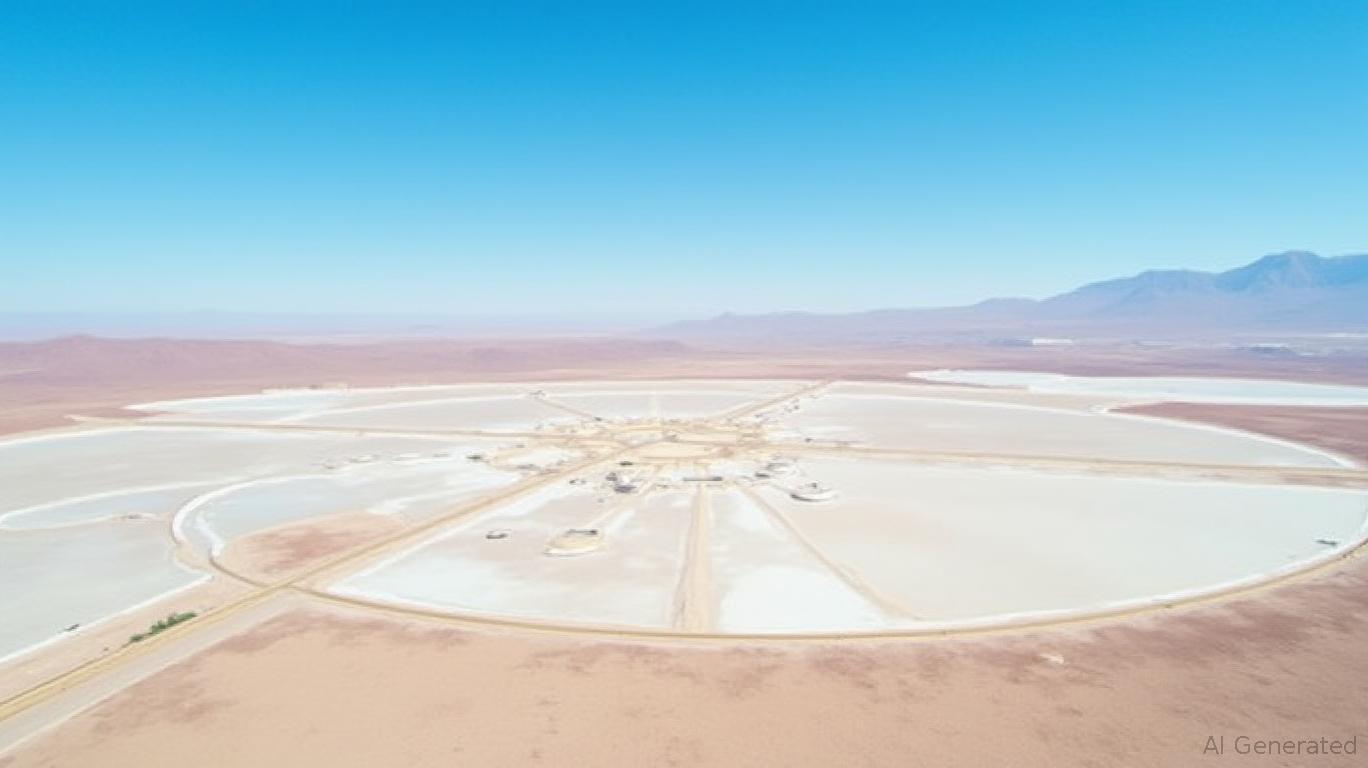Albemarle's Strategic Resilience: Navigating Lithium's Downturn with a Focus on Efficiency and Innovation

The lithium market is in a cyclical slump, with prices plummeting 74% since early 2023 to $18,500/ton—a level that has forced U.S. producers like
(ALB) to pause projects and restructure priorities. Yet beneath the headlines of delayed investments lies a compelling story of operational discipline and strategic foresight. Investors should take note: Albemarle's ability to preserve cash, optimize its world-class Chilean operations, and invest in breakthrough technologies like Direct Lithium Extraction (DLE) positions it to capitalize on the lithium supercycle's next phase. Here's why ALB's current valuation discount presents a compelling risk-reward opportunity.The Chilean Cost Advantage: A Foundation of Resilience
Albemarle's crown jewel is its 50% stake in the Salar de Atacama, one of the world's most efficient lithium brine deposits. While Chinese competitors require lithium prices above $15,000/ton for profitability, Albemarle's Chilean operations maintain a cash cost structure below $5,000/ton—a 70% cost advantage. This margin buffer allows the company to ride out the downturn while competitors with higher-cost assets (e.g., Australian hard-rock miners) shutter operations.
Albemarle's Q1 2025 results highlighted a 22% year-over-year lithium revenue decline, but its Chilean operations remain cash-flow positive even at today's depressed prices. The company is further optimizing through AI-driven process controls, cutting energy costs by 15% while maintaining production rates. This discipline ensures liquidity to fund strategic bets while competitors are forced into distressed asset sales.
The South Carolina Project: A Calculated Pause, Not a Failure
The $1.3 billion South Carolina lithium hydroxide plant—designed to produce 50,000 tons annually—was paused in early 2025 due to prices below its $20,000–$25,000/ton breakeven threshold. Critics miss the strategic logic here:
- Shovel-Ready Flexibility: The project remains fully permitted, with engineering complete and land secured. Restart timelines are 3–6 months, far faster than greenfield projects requiring years of regulatory hurdles.
- Strategic Importance: The facility was critical to U.S. lithium self-sufficiency (currently 5% domestic refining capacity) and alignment with the Inflation Reduction Act's critical minerals mandates. Its pause pressures policymakers to act—already, the Biden administration is exploring loan guarantees and tax credits for domestic lithium projects.
- Market Timing: With lithium prices now near lows (see below), Albemarle avoids overextending in a buyers' market.
When prices recover—a near certainty as Chinese overcapacity rationalizes and EV demand hits 20M units/year by 2030—the South Carolina plant will leapfrog competitors with its Inflation Reduction Act incentives and proximity to U.S. automakers.
DLE: The Game-Changer for Post-2025 Demand
While the South Carolina project waits, Albemarle is doubling down on Direct Lithium Extraction (DLE), a technology that could redefine lithium economics. Its $200M pilot programs in Chile, Arkansas, and Nevada target:
- 90% recovery rates in days (vs. 50% over 18–24 months for traditional brine evaporation).
- 70% less water consumption, critical for arid regions like Chile's Atacama.
- Lower capital intensity: DLE facilities could cost 30–50% less per ton than conventional plants.
While commercialization is 3–5 years away, DLE's scalability positions Albemarle to dominate the next lithium cycle. Consider this: if DLE cuts Chilean production costs to $3,000/ton by 2027, Albemarle's margins would expand even as competitors struggle at $10,000+/ton breakevens.
Navigating Risks: Tariffs, Overcapacity, and Policy
The two largest risks to Albemarle's thesis are:
1. Chinese Overcapacity: Beijing's subsidies have flooded the market with low-cost lithium, but this is self-limiting. Over 40% of Chinese lithium refining capacity is now cash-flow negative at current prices, and consolidation is inevitable.
2. U.S. Tariff Volatility: Section 232 tariffs on lithium imports could flip the U.S. cost equation overnight. Albemarle's "shovel-ready" South Carolina asset becomes a hedge if tariffs are imposed.
The policy tailwind remains underappreciated: the U.S. spends $6B annually on lithium imports, and the Inflation Reduction Act mandates 50% of EV batteries use North American-sourced materials by 2027. Albemarle's DLE tech and U.S. project could be linchpins of this shift.
Valuation: A Discounted Leader with Optionality
Albemarle's stock trades at 5x EV/EBITDA—a 30% discount to peers like SQM (SQM) and Livent (LTH)—despite its best-in-class assets. The market is pricing in permanent lithium weakness, but this ignores:
- The 2025 inflection point: EV battery demand is expected to grow at 25% CAGR through 2030.
- ALB's optionality: Its paused projects and DLE pipeline create leverage to a lithium price rebound, which is already underway in cobalt and nickel markets.
Investment Thesis: Buy ALB at current levels (mid-$40s) as a leveraged play on lithium's cyclical recovery. Historical backtesting of a short-term strategy—such as buying ALB five days before earnings and holding for 20 days—revealed significant risks. From 2020 to 2025, this approach delivered a maximum drawdown of 36% and a Sharpe ratio of 0.42, underscoring the challenges of timing market moves around earnings events. This reinforces the thesis that ALB's value lies in its long-term structural advantages, not speculative short-term trades. Key catalysts include:
- DLE pilot success by end-2025.
- U.S. policy support for domestic lithium (e.g., Production Tax Credit finalization).
- Lithium prices rebounding to $25,000/ton by early 2026.
Conclusion: ALB is a Lithium Leader with a Margin of Safety
Albemarle's strategic pause in South Carolina and pivot to DLE reflect the operational discipline that has defined its century-long history. While short-term lithium bearishness weighs on shares, the company's low-cost Chilean backbone, "shovel-ready" U.S. projects, and game-changing tech make it a rare lithium play with both defensive qualities and asymmetric upside. For investors with a 3–5 year horizon, ALB's discounted valuation offers an attractive entry point to profit from the coming EV revolution—and the lithium boom that will fuel it.

Comments
No comments yet